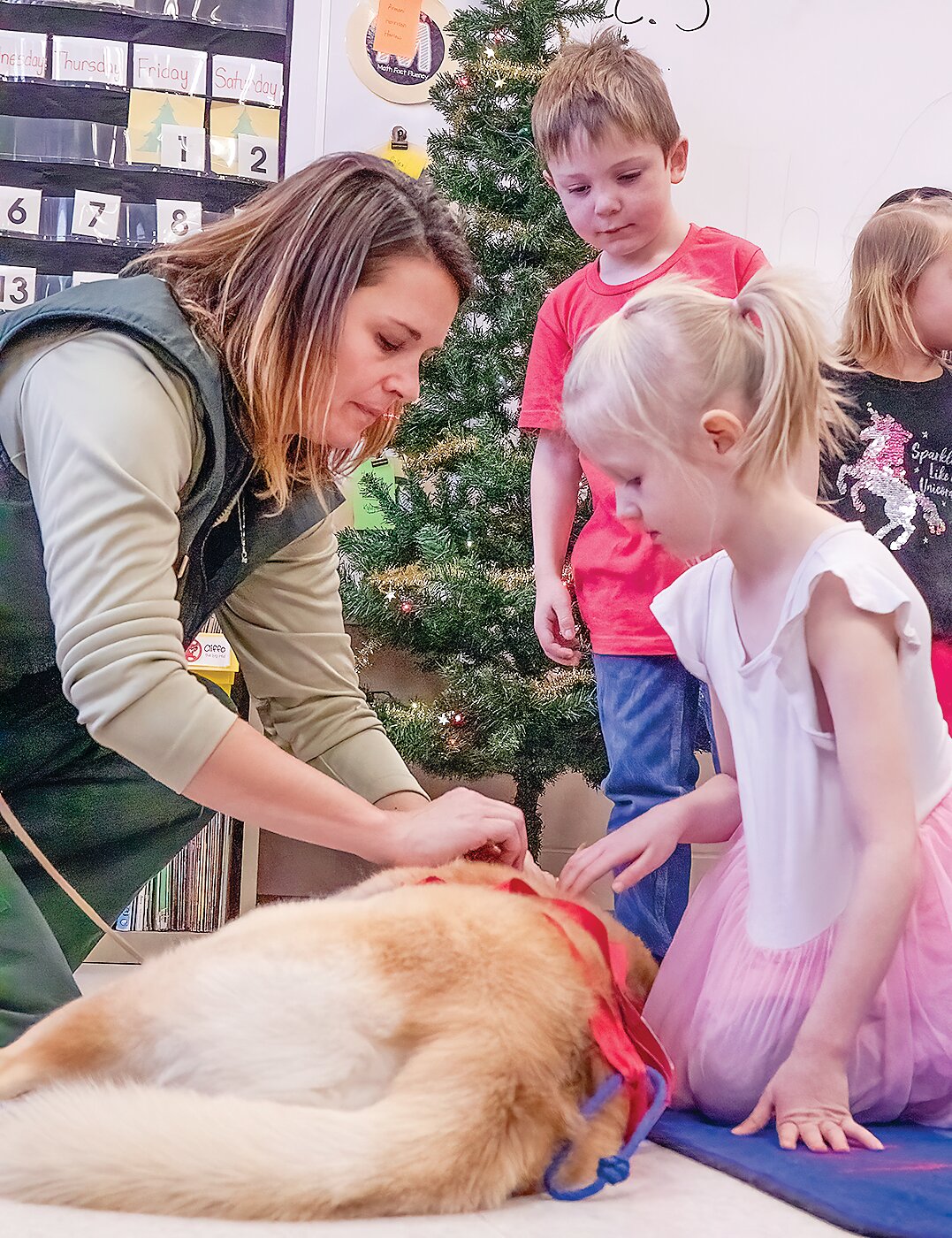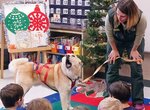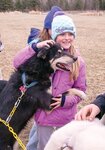Support the Timberjay by making a donation.
Forest Service brings sled dogs to North Woods
FIELD TWP- When Kaysee Miller asked a classroom of North Woods kindergarteners how many of them had been bitten by a dog on Tuesday, nearly every eager young hand shot up, as is often the case with …
This item is available in full to subscribers.
Attention subscribers
To continue reading, you will need to either log in to your subscriber account, or purchase a new subscription.
If you are a current print subscriber, you can set up a free website account and connect your subscription to it by clicking here.
If you are a digital subscriber with an active, online-only subscription then you already have an account here. Just reset your password if you've not yet logged in to your account on this new site.
Otherwise, click here to view your options for subscribing.
Please log in to continue |
Forest Service brings sled dogs to North Woods
FIELD TWP- When Kaysee Miller asked a classroom of North Woods kindergarteners how many of them had been bitten by a dog on Tuesday, nearly every eager young hand shot up, as is often the case with youngsters wanting to be a part of something. While most of those hands likely signaled pretend bites from a beloved stuffed animal, one thing was certain – Miller had their attention.
Miller, a silviculturist from the LaCroix Ranger District Office in Cook, was at the school with a number of her colleagues to teach students about the Forest Service sled dogs, dog safety, and a bit about the Boundary Waters Canoe Area as well.
“The Forest Service has been focusing on our commitment to developing relationships with all our partners and communities,” Miller said. “We have been partnering with the school and trying to develop a schedule when the Forest Service and DNR enter the school and work with the kids. In September we took the kids out into the school woods and did nature walks and taught the kids how to measure trees. In October we did bat week and big truck night. December will be our busier program when we discuss different job opportunities with the kids and opportunities on our Youth Conservation Crew.”
But Tuesday was for the dogs, including Miller’s canine companion for the day, a nine-year-old former sled dog named Chainsaw.
Step one with the kindergarteners was introducing them to the concept of body language. Miller modeled body language for several emotions and then moved on to pictures of a dog in various postures to illustrate what canine body language says about when and when not to touch them. The kids had great fun trying to make dog poses themselves, then listened attentively as Miller described various do’s and don’ts of how to behave with dogs. And Miller demonstrated how to approach a dog by offering the back of a hand first for them to sniff, and then when the dog is comfortable petting it from head to butt.
Miller had a Power Point presentation prepared, but when it wouldn’t run on the classroom computer she smoothly transitioned to improvising with a marker and whiteboard as she drew and described a typical Boundary Waters landscape and described the work the sled dog team does to take various things in and out, including campground accoutrements such as campfire grates and latrines and garbage. She described the life of dogs on the trail, how much they could pull, and what dogs in different positions on the team did, and practiced directional commands used by the musher with the kids.
She then turned to Chainsaw to show the children the difference between his outer and inner coats, all the while entertaining questions and comments about him.
Then came the moment of utmost child delight when Miller asked the children to line up for a turn petting Chainsaw. She reinforced what she had taught them about approaching a dog, and Chainsaw happily and calmly accepted all the attention.
Forest Service staff adapted their presentations as they moved across different grade levels, engaging at age-appropriate levels.
Jasmine Baerg and Amina Kovacevic drew the seventh graders in the classroom of Andrew Jugovich, and as one might expect they weren’t as eager to jump at answering questions as kindergartners, although a majority raised their hands when the dog bite question was posed. Baerg walked the class through a detailed Power Point presentation enhanced by photos and videos of the sled dog team in action, and Kovacevic jumped in from time to time with additional reflections and conversation starters.
When the bell rang at 1:27, classroom presentations were done and it was on to the day’s biggest highlight behind the school, sled dog team leader Tom Roach and his sled dogs. Roach brought along two sleds and various pieces of equipment and tools the team takes with them for work and safety. Roach’s lively presentation was engaging enough to keep the students focused on him rather than on the sled dogs, no small accomplishment particularly with the younger ones. When it came time to go see the dogs, Roach had a host of volunteers to help keep order and reinforce the appropriate behaviors that had been taught in the classrooms.
Roach talked about the dogs on the team.
“I have seven different generations of dogs here,” he said. “They’re all uncles, cousins, aunts, brothers, sisters, and grandparents of each other. About half of these dogs are either nine or ten, and the other half are between two and four.”
Roach said he enjoys taking the dogs to schools and other venues.
“I like to take the dogs out and tell people what they do,” he said. “They like people, they’re very sociable, and it’s good for them to be around people. It makes them more well-rounded and more calm.”
Roach could see that the classroom presentations had made an impression.
“(The kids) are using some of their talking points they’d gotten in the classroom about how to handle and approach a dog,” he said. “We keep it pretty controlled by trying to keep three kids at a time at the dogs. We make sure we’re watching. The only thing is you’re likely to just get licked in the face.”
Additional activity
Miller said the Forest Service is doing additional work with North Woods assisting with development of the school forest. She said the DNR’s Victoria Jari has been taking the lead on developing the school forest and “doing an amazing job.”
Also in the works is creating places in the larger forest where schools can go for field trips.
“We are currently improving our Echo Campground (map below) area for the public and to be able to bring schools out there,” Miller said. “We will be making the area more resilient to fires, insects and disease and promoting longer lived species in the area. These areas will be a place we can bring any group of kids or adults to interact in nature. The trails will be well developed for ease of walking, with interpretive signs that identify trees, plants and management activities to showcase the work and our beautiful area we are lucky to work in. For the rest of the year our school activities will be planting trees in the school forest in spring time, possibly coordinating with the school to bring the kids onto the National Forest to see tree climbing and assist with planting trees and exploring the wood in the Echo Campground area, along with community education programs of walking in the woods with a forester to ask any management or nature questions.”











